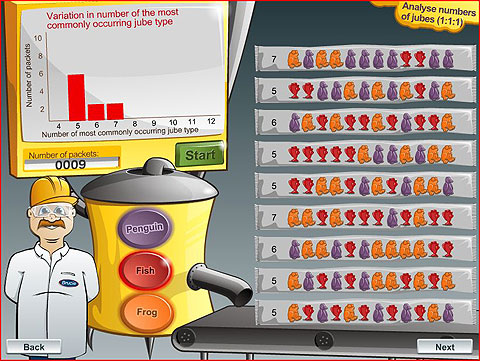Home > Statistics > Good teaching > Data collection > Sample size and variation > Random or not
Random or not
The digital object L3655 Random or not: analyse numbers of jubes (1:1:1) has a machine that makes three different types of jubes. Each jube type is equally likely to be produced. The machine randomly generates packets containing 12 jubes.
Students generally expect the most common packet will contain four of each type but the results challenge students’ understanding of expected outcomes.
Demonstrate this object with student participation. Some hints can be found in Random or Not: Teacher Notes. Generate nine packets observing the maximum number of any one type of jube in each.
Observe the variation in the packets and make a prediction based on this small sample. This is often inaccurate. Generate results from larger samples of 100 and 1000, leading to predictions more consistent with the quite surprising theoretical expectations.
This learning object is one in a series of 17 objects. The other objects are listed under Related Items which can be found in the Details section. Students can also use the machine to conduct their own investigations in L5835 Random or not: open investigations.

